Research Highlights
Research Highlights
A selection of highlights culled from publications by HAO staff.
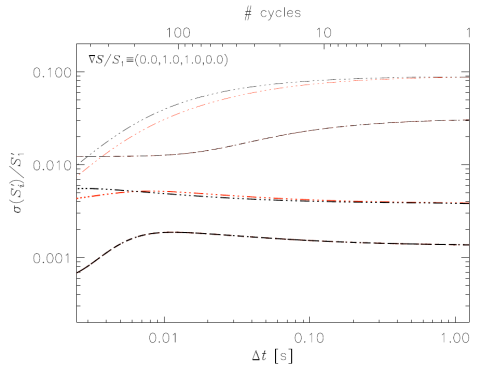
Erratum: Analysis of Seeing-Induced Polarization Cross-Talk and Modulation Scheme Performance
R. Casini, A. G. de Wijn, P. G. Judge analyze (Published 2012 September 4) the generation of polarization cross-talk in Stokes polarimeters by atmospheric seeing, and its effects on the noise statistics of spectropolarimetric measurements for both single-beam and dual-beam instruments.

Magnetohydrodynamic turbulence simulations as a testing ground for PUNCH
Sarah Gibson et. al. present a numerical study that combines magnetohydrodynamic simulations of turbulence together with forward-modeling synthesis of white- light data via the FORWARD code. Their study is a first step in the process of analyzing and understanding the unprecedented information that The Polarimeter to UNify the Corona and Heliosphere (PUNCH) will provide.
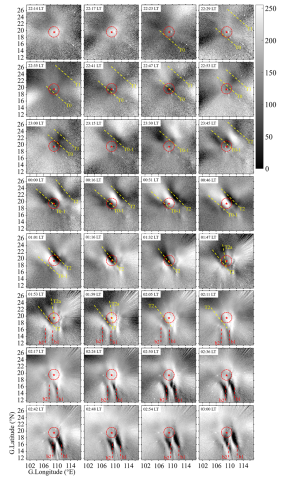
Interactions between MSTIDs and Ionospheric Irregularities in the Equatorial Region Observed on May 13-14, 2013
Kun Wu, and Liying Qian investigate the interactions between medium-scale traveling ionospheric disturbances (MSTIDs) and the equatorial ionization anomaly (EIA), and between MSTIDs and equatorial plasma bubbles (EPBs) on the night of May 13-14, 2013, based on observations from multiple instruments (all-sky imager, digisonde, and global positioning system (GPS)).
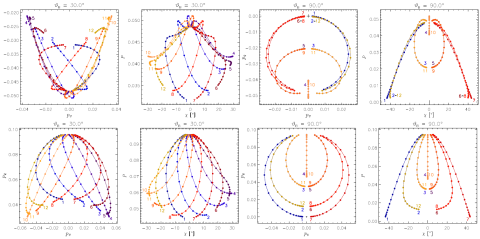
A unifying polarization formalism for electric- and magnetic-multipole interactions
R. Casini, R. Manso Sainz, A. Lopez Ariste, and N. Kaikati extend the spherical tensorial formalism for polarization to the treatment of eletric- and magnetic-multipole transitions of any order, to model the radiation anisotropy affecting the scattering of radiation in an electric-quadrupole transition, and the associated Hanle effect in the presence of a magnetic field.
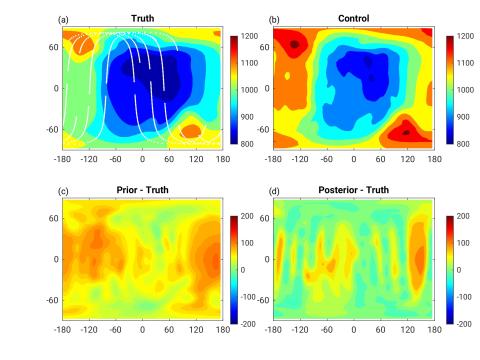
A Community Ionosphere-Thermosphere Observing System Simulation Experiment (OSSE) Tool
Chih-Ting Hsu, et al. in this study demonstrate the utility of DART/TIEGCM as an IT OSSE tool, using synthetic observations simulated using a currently planned NASA Geospace Dynamics Constellation (GDC) observing system design. Five sets of OSSEs are carried out to compare the effects of assimilating various combinations of prospective GDC observations (e.g., neutral temperature, neutral wind, neutral composition, atomic oxygen ion density, and ion and electron temperature) during a major geomagnetic storm period of the St Patrick's Day Storm on March 17, 2013.
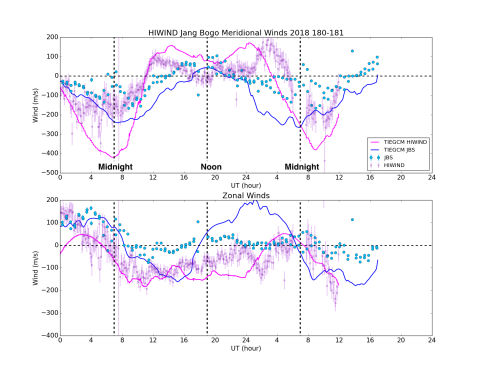
HIWIND Balloon and Antarctica Jang Bogo FPI High Latitude Conjugate Thermospheric Wind Observations and Simulations
Qian Wu, Dong Lin, Wenbing Wang, Liying Qian, Geonhwa Jee, Changsup Lee, and Jeong-han Kim use balloon instrument in the northern hemisphere and ground based instrument in the southern hemisphere to study the conjugacy of the thermospheric winds of high latitudes.
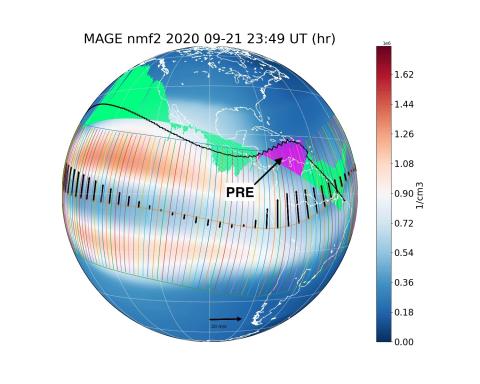
MAGE Model Simulation of the Pre-reversal Enhancement and Comparison with ICON and Jicamarca ISR Observations
Qian Wu, Wenbin Wang, Dong Lin, Liying Qian, Chaosong Huang, and Yongliang Zhang use the latest coupled geospace model MAGE (Multiscale Atmosphere-Geospace Environment) and observations from Jicamarca ISR and ICON IVM instrument, we examine the pre-reversal enhancement during geomagnetic quiet time period.
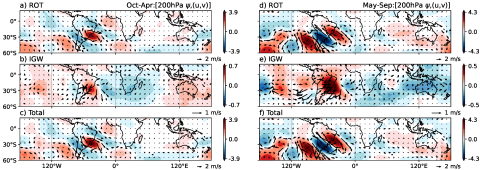
Tropical and Subtropical South American Intraseasonal Variability: A Normal-Mode Approach
André SW Teruya, Víctor C Mayta, Breno Raphaldini, Pedro L Silva Dias, and Camila R Sapucci use a normal-mode decomposition method to analyze South American intraseasonal variability (ISV). This demonstrated that a realistic circulation can be reproduced, giving a powerful tool for diagnosing and studying the dynamics of waves and the interactions between them in terms of their ability to provide causal accounts of the features seen in observations.
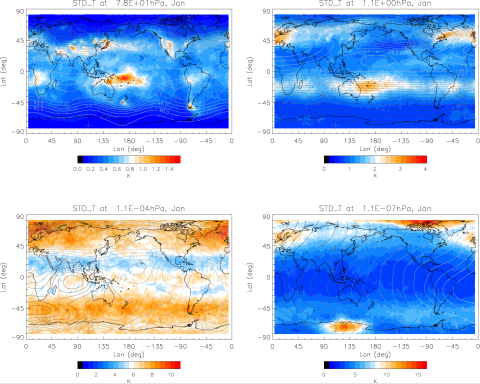
Assessment of gravity waves from tropopause to thermosphere and ionosphere in high-resolution WACCM-X simulations
H.-L. Liu, P. H. Lauritzen, F. Vitt, and S. Goldhaber have developed a high-resolution whole atmosphere model (WACCM-X), which extends from the Earth surface to the upper thermosphere, that can partially resolve the small scale wave quantification.